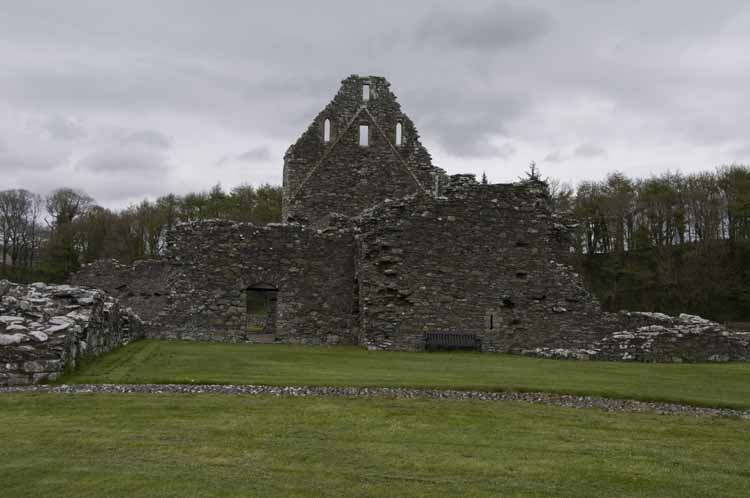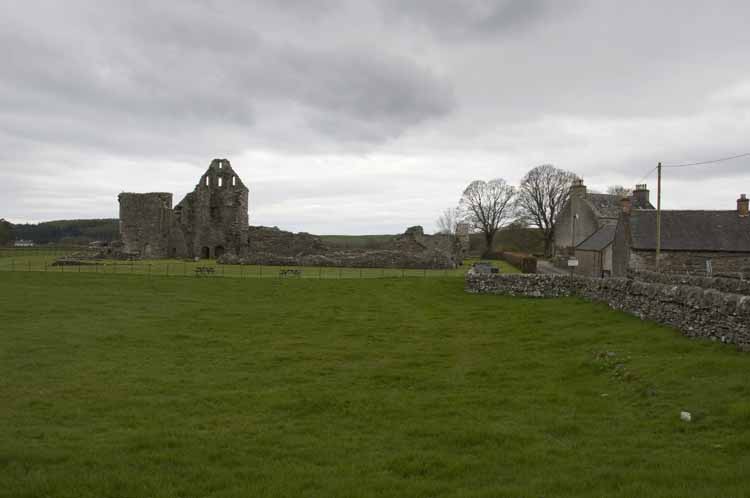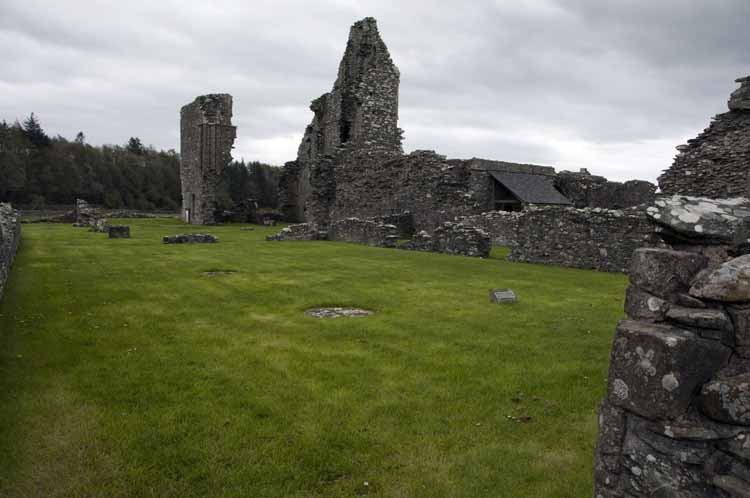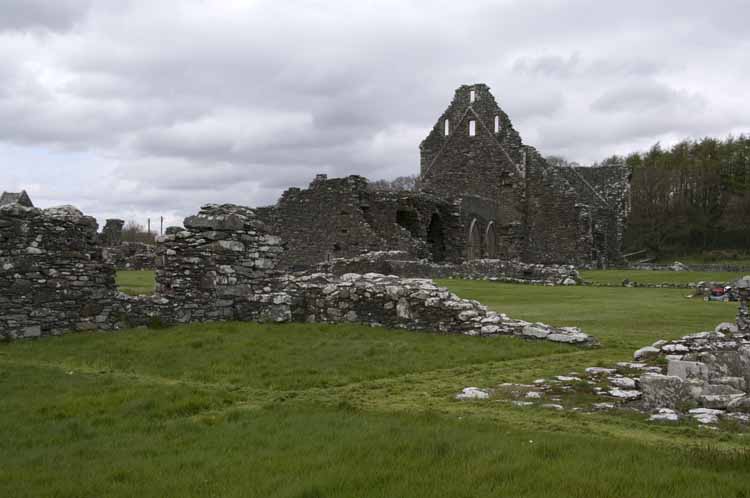
Cistercian Abbey at Glenluce, Dumfries and Galloway.
Glenluce was founded between 1191 and 1192 by Roland, lord of Galloway and constable of Scotland. Roland was the grandson of the patron of Dundrennan and it is likely that the first monks were brought from that monastery. Very little is known about the history of Glenluce Abbey, although it is said to have been severely damaged during a rebellion in Galloway in 1235. The abbey was apparently visited by Robert the Bruce and James IV, and Mary Queen of Scots was known to have stayed there during a royal progress.
Glenluce was not a wealthy abbey and would have accommodated no more than fifteen monks. In 1561 the annual income of the abbey was valued at £667, making Glenluce the second poorest abbey of the Cistercian Order in Scotland at that time.
During the sixteenth century, the house was the victim of a series of disputes between Scottish lords who each claimed the position of commendator. The dispute was apparently brought to an end when Walter Mallen became commendator [when the ecclesiastical benefice in placed into the trust to the custody of a patron] of the abbey in 1519 and some stability returned to the abbey during his term in office. However, in 1544 the abbot was expelled from the abbey by the earl of Cassillis and the abbey was invaded twice between 1545 and 1546, firstly, by the followers of the earl of Cassillis and then by the followers of John Gordon of Lochinvar. Both these men sought possession of the abbey by enforcing their claims on the office of commendatorship. In 1547 Walter Mallen resigned in favour of James Gordon, brother of John Gordon of Lochinvar. On the death of James Gordon, before March 1560, John of Lochinvar expelled the monks and took occupation of the abbey. Thomas Hay, a protégé of the earl of Cassillis, was then installed as commendator, although the ceremony had to take place in the parish church owing to the occupation of the abbey by John of Lochinvar. In 1561 Thomas Hay recovered possession of the monastic buildings and remained as commendator until his death in 1580, when it then passed to Gilbert Moncrief. In 1581/2 Gilbert resigned the post to Laurence Gordon. The struggle between the two factions continued until after the Reformation. The situation was finally resolved in 1602 when the abbey was erected into a temporal lordship for Laurence Gordon of Lochinvar, although many of the abbey’s lands had already been alienated by the earl of Cassillis.
In 1619 the abbey was bestowed upon the bishop of Galloway and thereafter the monastic buildings were allowed to fall into a state of ruin. The most impressive of the ruins is the chapter-house, built c. 1500; it remains almost complete and in a very good state of preservation. It contains some fine late-medieval stone carving, two beautiful windows in the east wall, and some of the original glazed floor tiles which have been re-set around the base of the central column. The remaining monastic buildings were much interfered with at later dates and only the outlines of the buildings erected by the monks can now be ascertained. A particularly noteworthy feature at the site is the network of interlocking clay pipes which carried fresh water supplies around the abbey. Excavation of the site has revealed a considerable amount of pottery, including high quality ware from France, suggesting that the monks like msot other Cistercian abbeys bought or traded with an international market.
Sources:
University of Sheffield
- The Cistercians in Yorkshire Project
Tarraham, C. 2010. Glenluce Abbey,
Historic Scotland


